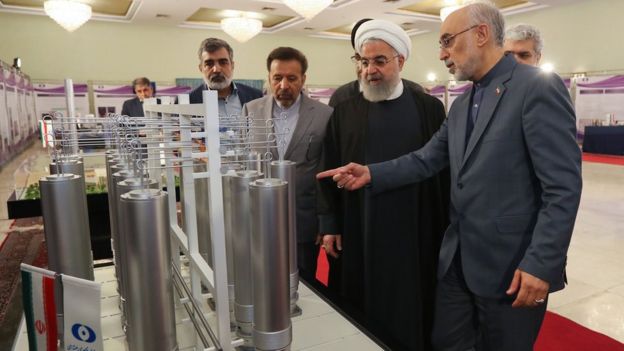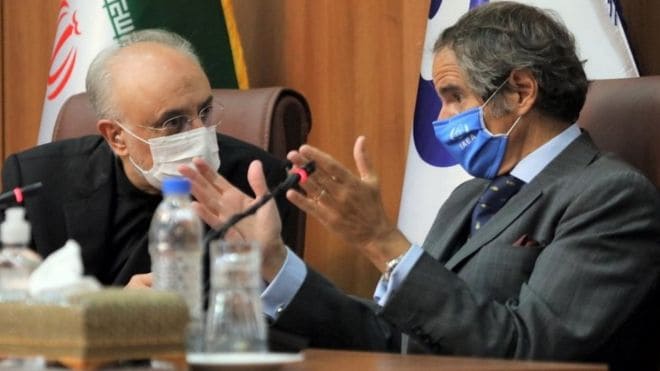Iran has agreed to give International Atomic Energy Agency inspectors access to two suspected former nuclear sites.
A joint statement said Iran was doing so in good faith to resolve outstanding issues related to nuclear safeguards.
The agreement came during a visit to Tehran by the IAEA’s director general.
The global watchdog has criticised Iran for not answering its questions about possible undeclared nuclear material and nuclear-related activities at the two locations, and denying it access.
It is thought the activities took place long before 2015, when Iran struck a landmark deal with world powers that placed limits on its nuclear programme.
Iran insists it has never sought nuclear weapons, but evidence previously collected by the IAEA suggests that until 2003 it conducted “a range of activities relevant to the development of a nuclear explosive device”.
What has been agreed?
IAEA Director General Rafael Grossi flew to Tehran on Monday for consultations with the head of the Atomic Energy Organisation of Iran, Ali Akbar Salehi.
On Wednesday, they announced they had “reached an agreement on the resolution of the safeguards implementation issues specified by the IAEA, in good faith”.

“In this regard, Iran is voluntarily providing the IAEA with access to the two locations specified by the IAEA and facilitating the IAEA verification activities to resolve these issues,” it added.
“Dates for the IAEA access and the verification activities have been agreed.”
The statement said that in the present context, the IAEA did not have further questions for Iran or further requests for access to locations.
What do we know about the sites?
The IAEA is tasked with certifying Iran’s declarations under the Comprehensive Safeguards Agreement of the Treaty on the Non-Proliferation of Nuclear Weapons, and facilitating an Additional Protocol that Iran agreed to implement in 2015.
In its latest report on the safeguards agreement, published in June, the IAEA expressed concern about:
- The possible presence between 2002 and 2003 at one site of natural uranium in the form of a metal disc. In 2003 and 2004, the location underwent extensive sanitisation and levelling
- The possible use or storage of nuclear material and/or conducting of nuclear-related activities at a second location, which may have been used for the processing and conversion of uranium ore in 2003. The site underwent significant changes in 2004, including the demolition of most buildings
- The possible use and storage of nuclear material at a third location where outdoor, conventional explosive testing may have taken place in 2003, including in relation to testing of shielding in preparation for the use of neutron detectors. From 2019 onwards, the IAEA observed activities consistent with efforts to sanitise part of the site
At the start of this year, the IAEA asked Iran to provide access to the second and third locations so that inspectors could carry out environmental sampling. The agency believed there would be no value in obtaining access to the first location.
The report said Iran had responded by saying it was unable to provide access to the sites and that it would “not recognise any allegation on past activities”.

